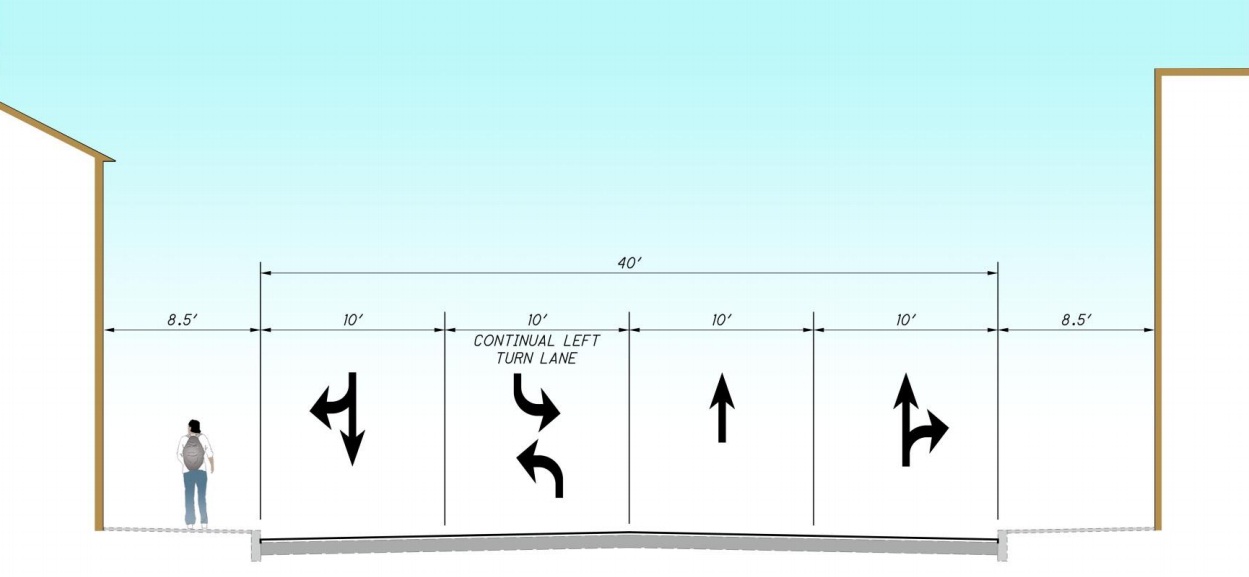Peebles Corner was once the scene of Cincinnati’s original uptown; however, the Walnut Hills neighborhood began to decline as people moved further away from the center city. The quality of the neighborhood’s historic fabric still echoes that grandeur.
Neighborhood leaders have now become accustomed to people driving past many of these buildings along McMillian Avenue, past Interstate 71 (I-71), at a speed much faster than the posted speed limit of 30mph. The one-way street allows drivers to move through Walnut Hills at a speed that threatens pedestrians and makes the business district an unpleasant place for someone to linger.
The negative impacts of one-way streets through urban neighborhoods have been long documented, and cities across the country are beginning to convert these stretches of roadway back to two-way traffic. Thus far there have been encouraging results.

Two-way street cross section for Walnut Hills. Rendering provided.
“The street design should help make the Walnut Hills business district a destination again, instead of serving as a raceway through the neighborhood,” said Vice Mayor Roxanne Qualls (C) in 2010 after introducing a motion to move forward with additional study work.
Qualls also believes that while streets should serve local traffic, they also need to create an atmosphere where people can live, work, shop, walk and bike safely.
In June 2012, Cincinnati City Council’s Livable Communities Committee met to discuss the proposed conversion of McMillian Avenue and William H. Taft in Walnut Hills. The conversion, which has been approved and will start this fall, will be in place on both streets east of I-71. Department of Transportation & Engineering (DOTE) officials and consultants from URS Corporation briefed the committee on the reconfiguration of both streets.
Kevin Wright, Executive Director of the Walnut Hills Redevelopment Foundation sees the change as part of a broader strategy to revitalize the Peeble’s Corner Business District.
“We think the two-way conversion is going to be a huge help in terms of both physical and economic development, but it’s important that we don’t view it as a panacea,” Wright told UrbanCincy. “Transportation improvements like this are essential to redevelopment efforts like ours, but in order to create real change we will also need to focus on safety, cleanliness, design, business development, and physical development; all of which we are working on now.”
The recommendation to transform the two streets in Walnut Hills came from the Uptown Access Study which examined the idea. Since that time, the City of Cincinnati has conducted eight public meetings on the issue, and looked at possible alternatives, like adding bicycle lanes to both streets.
The final choice made by the City was focused around maintaining traffic flow from the western portions of both streets across I-71, and eliminates parking on one side of the street.
“The design isn’t perfect, but is still a big step in the right direction,” explained Wright. “It is our hope that the corridor will look completely different two to three years from now, and that the city will look to make some modifications to the design of the street at that time.”

